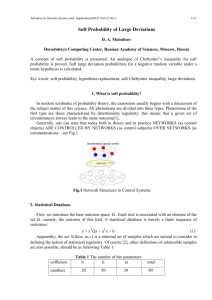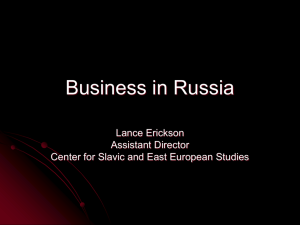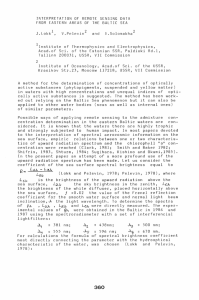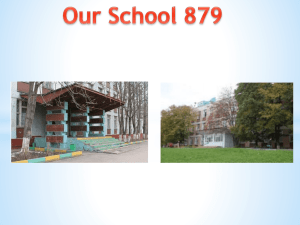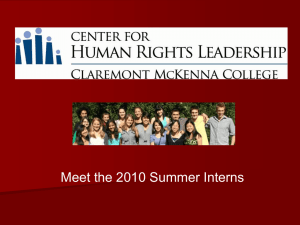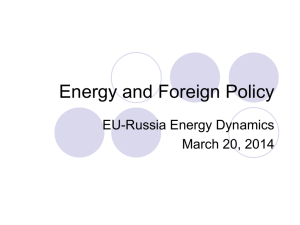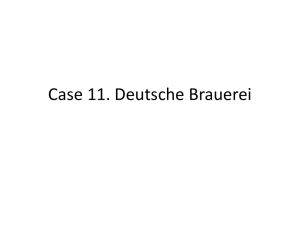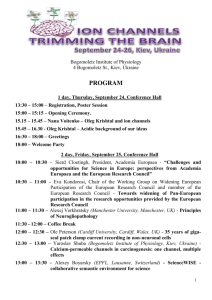- NATO - Defense College Foundation
advertisement
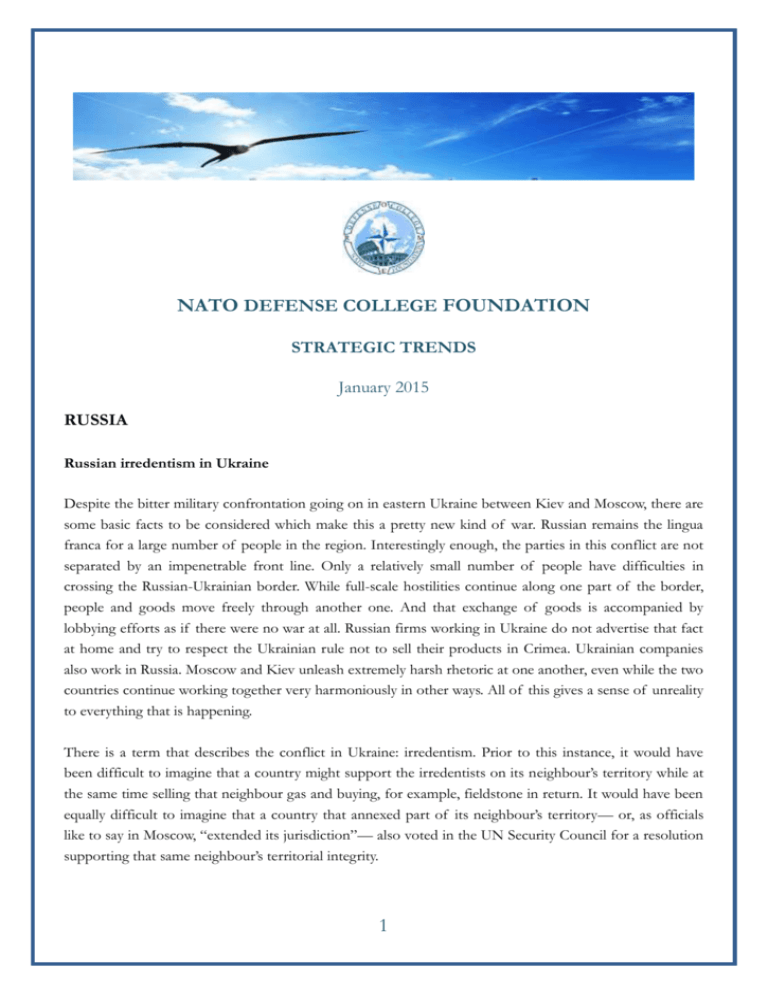
NATO DEFENSE COLLEGE FOUNDATION STRATEGIC TRENDS January 2015 RUSSIA Russian irredentism in Ukraine Despite the bitter military confrontation going on in eastern Ukraine between Kiev and Moscow, there are some basic facts to be considered which make this a pretty new kind of war. Russian remains the lingua franca for a large number of people in the region. Interestingly enough, the parties in this conflict are not separated by an impenetrable front line. Only a relatively small number of people have difficulties in crossing the Russian-Ukrainian border. While full-scale hostilities continue along one part of the border, people and goods move freely through another one. And that exchange of goods is accompanied by lobbying efforts as if there were no war at all. Russian firms working in Ukraine do not advertise that fact at home and try to respect the Ukrainian rule not to sell their products in Crimea. Ukrainian companies also work in Russia. Moscow and Kiev unleash extremely harsh rhetoric at one another, even while the two countries continue working together very harmoniously in other ways. All of this gives a sense of unreality to everything that is happening. There is a term that describes the conflict in Ukraine: irredentism. Prior to this instance, it would have been difficult to imagine that a country might support the irredentists on its neighbour’s territory while at the same time selling that neighbour gas and buying, for example, fieldstone in return. It would have been equally difficult to imagine that a country that annexed part of its neighbour’s territory— or, as officials like to say in Moscow, “extended its jurisdiction”— also voted in the UN Security Council for a resolution supporting that same neighbour’s territorial integrity. 1 Irredentist conflicts are, by definition, local problems. There is a huge distance between such localized irredentist conflicts and a Cold War-like global confrontation. And yet the current situation shows in different ways that it could escalate very seriously. The fact that European leaders recently negotiated for many hours in Minsk itself testifies how much is at stake. As recently as one year ago, everybody assumed that it was impossible for full-scale hostilities to erupt in Europe. That genie of open hostilities escaped briefly from its lamp in Georgia in August 2008, but was forced back in again after just five days. This time, the conflict has been raging for months, thousands have died and whole regions — including homes, factories, roads and social infrastructure — have been reduced to ruins reminiscent of Bosnia. Public order has been destroyed. Apparently, values and institutions have become rather inflated since August 2008, to the extent that now the agreement for a cease-fire is more important than the cease-fire itself. Or perhaps it is coming to resemble the dystopian Orwellian adage that “War is peace”. Although the conflict in Ukraine is not the first, and probably will not be the last war on the territory of the former Soviet Union, the fact that it has been lasting this long is creating a dangerous precedent for a number of regions that are also torn by ethnic and territorial disputes. This could be the case of Baltic States. UK Defence Secretary Michael Fallon has recently warned that Russian President Vladimir Putin poses a “real and present danger” to three Baltic states. As a matter of fact, the danger is that threats to the sovereignty of Estonia, Latvia and Lithuania would quickly expose the fundamental hollowness of European Union unity. As Zbigniew Brzezinski, a former U.S. security adviser, recently pointed out, the Russian military could occupy all three Baltic countries in a day if it so wished. But are the Germans, French and Italians really willing to enter a ground war with nuclear-armed Russia for the sake of tiny Estonia, a country of 1,3 million people? 2
